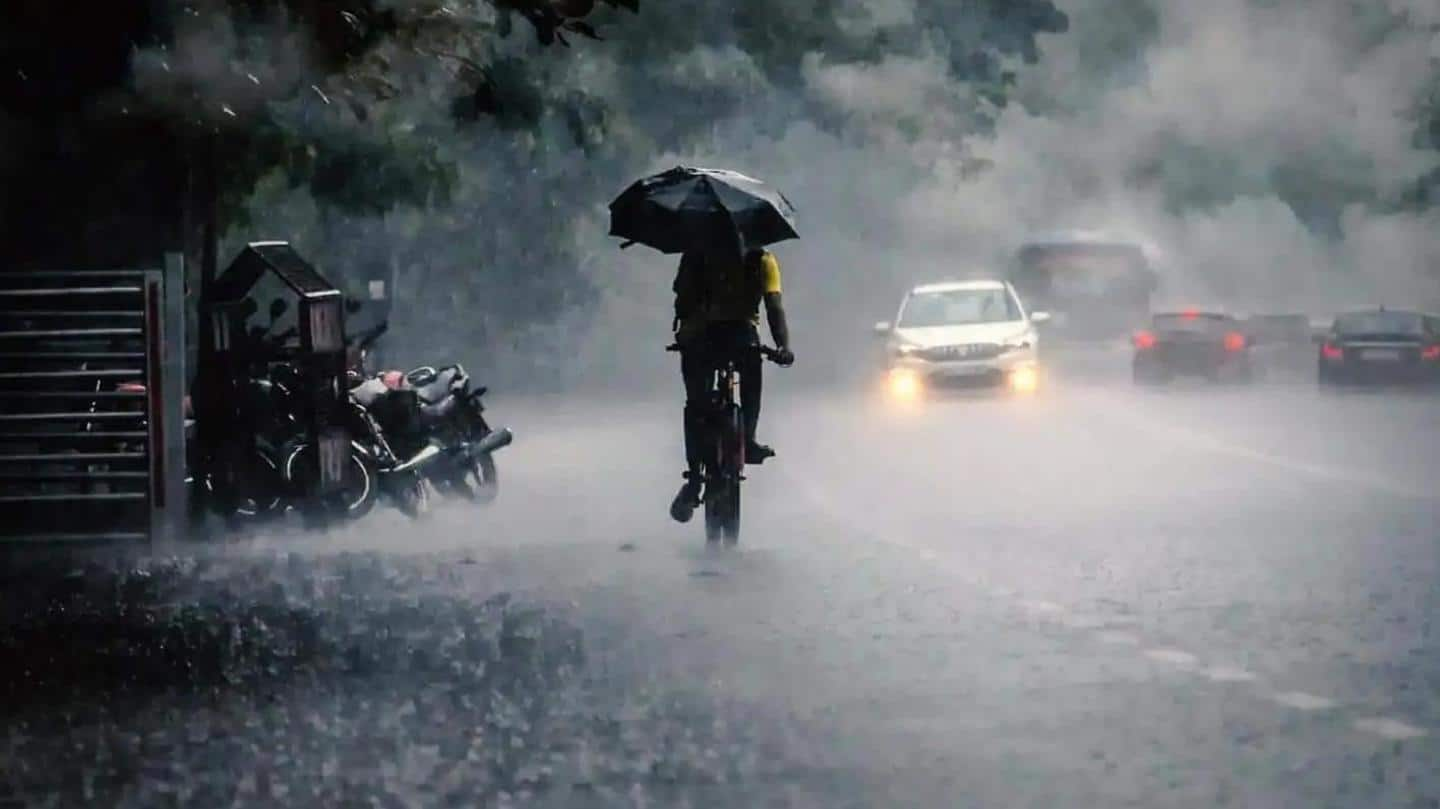
Cherrapunji receives record rainfall since 1995 amid floods in northeast
What's the story
Cherrapunji in Meghalaya received a record-breaking 972 mm of rain in 24 hours ending at 8:30 am on Friday, just two days after receiving 811.6 mm of rain in a single day, according to the India Meteorological Department (IMD).
As per records, Cherrapunji, one of the world's wettest places, has witnessed more than 800 mm of rain only on nine occasions in June.
Context
Why does this story matter?
India has been facing extreme weather events this year due to climate change.
On Friday, the flood situation in Assam deteriorated as nine more people died, including two children, bringing this year's flood death toll to 55.
Meanwhile, Cherrapunji received 673.6 millimeters of rain on Thursday, 811.6 mm on Wednesday, 62.6 mm on Tuesday, 293 mm on Monday, and 354 mm last Sunday.
Fact
Cherrapunji received 4,081.3 mm rainfall in June 2022: IMD
According to Sunit Das, a scientist at the regional center of the IMD, Guwahati, Cherrapunji has witnessed a total of 4,081.3 mm of precipitation this month.
The highest June rainfall was previously 1,563.3 mm—recorded on June 16, 1995.
"It doesn't always rain like this. 50-60 cm is normal once or twice every year. But 80 cm and above is certainly not usual," Das stated.
Reason
What is the reason behind this year's exceedingly rare rainfall?
"A trough has been persisting over the region (Meghalaya) for some days, and southwesterly winds have been continuously bringing a lot of moisture from the Bay of Bengal. These winds smash against the cliffs of the Khai hills and give rainfall," Das said.
The heavy rains are expected to last for another day or two.
The intensity will then decrease, as per the scientist.
Mawsynram
What about the wettest place in India?
At a distance of 10km from Cherrapunji, Mawsynram, the wettest place in India, recorded 710.6 mm of precipitation in a single day on Wednesday, the highest since June 1966.
Mawsynram had previously recorded 717.6 mm of precipitation on June 10, 1966, and 944.7 mm of precipitation on June 7, 1966, which was the most precipitation on a June day since IMD began maintaining records.
Context
India's eastern regions received 39% more rainfall than normal
"Mawsynram is at present the wettest place in India, with an average annual rainfall of 11,802.4 mm (average of the 1974-2022 period). Cherrapunji receives 11,359.4 mm of rainfall in a year (average of the 1971-2020 period)," Das reportedly explained.
Since June 1, the eastern region of India has received 220.3 mm of rain, 39% more than normal, leading to massive floods in the northeast.
Floods
What is the flood situation in Assam?
Due to the ongoing floods and landslides, 18.94 lakh people have been affected in 28 districts.
Assam has approximately 3,000 villages and 43,000 hectares of farmland flooded with all the major rivers flowing above danger marks.
Notably, 234 roads and 16 bridges were damaged in Assam, while landslides on NH 6 in neighboring Meghalaya hindered vehicular traffic between Guwahati, Shillong, Silchar, and Agartala.
Update
31 deaths in two days, flash flood in Agartala
In the last two days, 31 people have been killed in floods and landslides in Assam and Meghalaya.
Agartala, Tripura's capital, also experienced a massive flash flood, with the city receiving 145 mm of rain in just six hours.
According to reports, this is Agartala's third-highest rainfall in the last 60 years.
The flash flood has forced the closure of Agartala's educational institutions.
Fact
Meghalaya, Assam, Arunachal report excess rainfall, other states witness deficit
Since June 1, Meghalaya has received 865.7 mm of rain, which is 153% more than normal.
Arunachal Pradesh received 253.1 mm of rain, which is 22% above normal, while Assam received 372.9 mm, which is 79% more than normal.
On the other hand, Manipur, Mizoram, and Tripura have reported rainfall deficits of 50%, 46%, and 38%, respectively, according to the IMD.
Information
North's rainfall deficit compensated by South's excess rainfall
A similar pattern has been observed in the north and south of India. Notably, northwest India experienced a 63% rainfall deficit amid scorching heatwaves during the pre-monsoon period this year, which was compensated by exactly 63% excess rainfall in the southern peninsular region.
Climate Change
Climate change is affecting India
In March, Abinash Mohanty, Programme Lead at the Council on Energy, Environment, and Water (CEEW), said the IMD's heatwave alerts reflect the effects of climate extremes in recent years.
This is consistent with projections of the Intergovernmental Panel on Climate Change report.
"Increase in the intensity and frequency of extreme events...is a result of human-caused landscape disruptions...which causes temperature and precipitation anomalies," Mohanty stated.